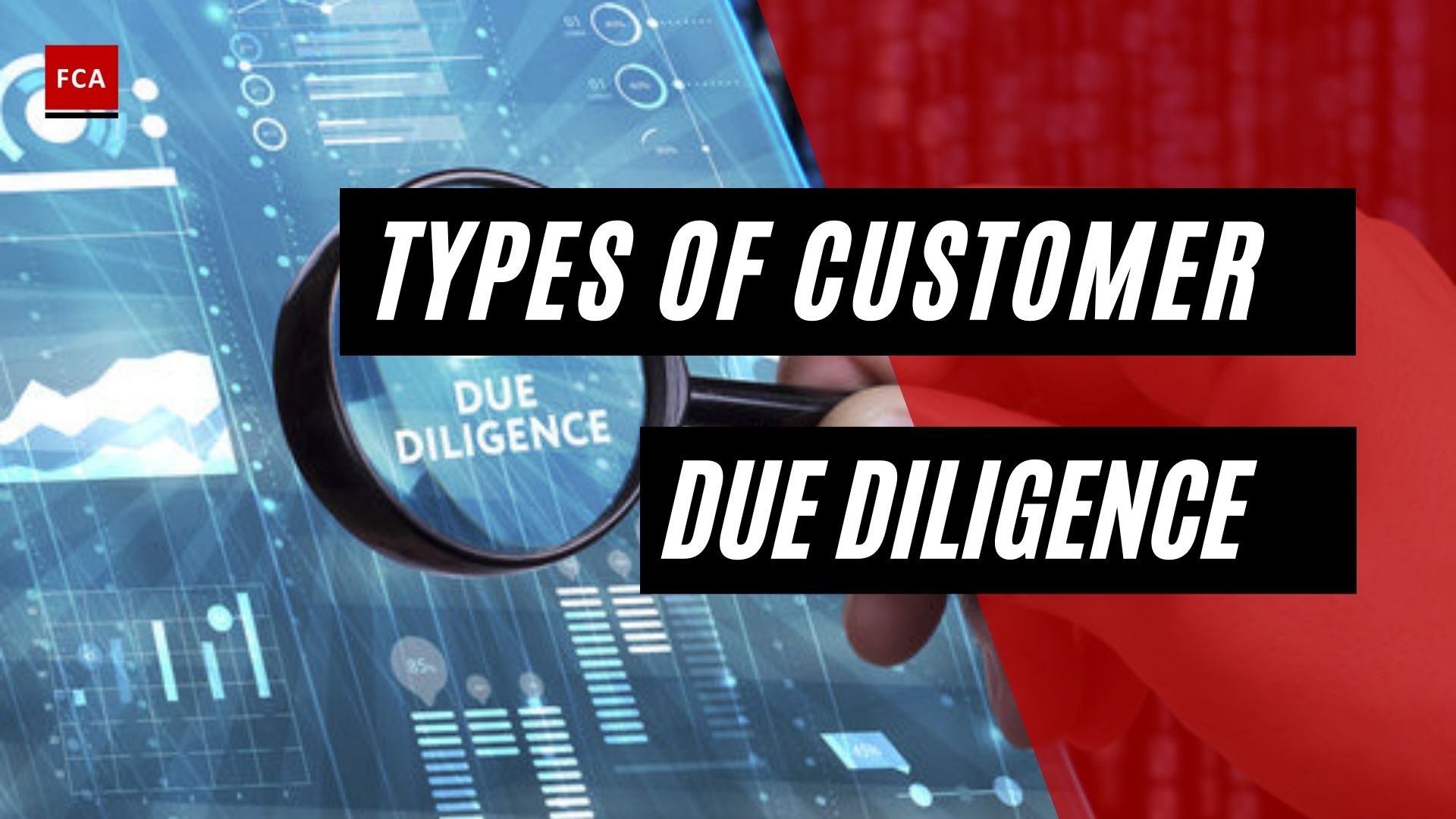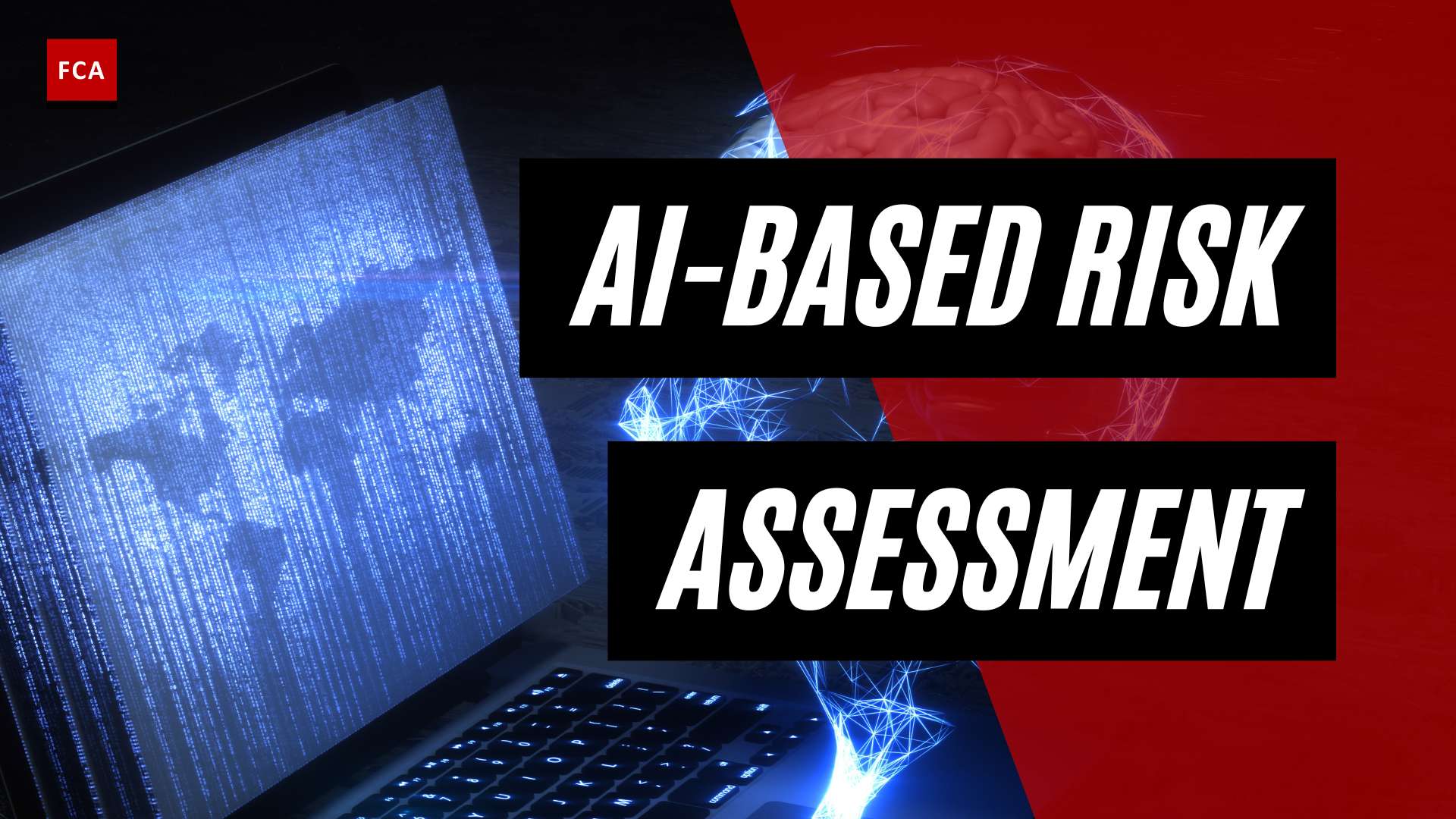Understanding Enhanced Due Diligence (EDD)
In the realm of compliance and risk management, Enhanced Due Diligence (EDD) plays a crucial role in combating money laundering and other financial crimes. This section will provide an overview of what EDD entails and highlight its importance in the realm of compliance.
What is EDD?
Enhanced Due Diligence (EDD) refers to a comprehensive framework designed to address high-risk clients and significant financial transactions. It involves conducting a deeper level of scrutiny and gathering additional information to better understand the potential risks associated with specific individuals or entities. The goal of EDD is to lower the chances of money laundering, terrorist financing, and other illicit activities.
EDD procedures are typically triggered by certain risk factors, such as doing business with politically exposed persons (PEPs), individuals from high-risk or sanctioned countries, or situations with an increased risk of money laundering. The specific regulations and requirements for EDD may vary across jurisdictions and industries.
Importance of EDD in Compliance
The importance of EDD in compliance cannot be overstated. By implementing EDD measures, organizations can effectively mitigate the risks associated with money laundering and other financial crimes. EDD allows businesses to gain a deeper understanding of their customers, transactions, and potential vulnerabilities. It enables them to make informed decisions and take appropriate actions to ensure compliance with relevant regulations.
The use of a risk-based approach to EDD is crucial. Not all customers pose the same level of risk, and EDD allows organizations to allocate their resources more effectively by focusing on high-risk individuals or entities. By conducting thorough due diligence on these high-risk customers, organizations can identify and address potential red flags and vulnerabilities.
Financial institutions, in particular, have a responsibility to implement robust EDD procedures. Banks and other financial entities are often targeted by money launderers due to the nature of their services and the potential for large-scale financial transactions. EDD helps financial institutions authenticate customer identities, assess the risk of money laundering, and detect suspicious activities. It goes beyond the standard Customer Due Diligence (CDD) process by gathering additional details and conducting a more thorough analysis.
To effectively carry out EDD, organizations can leverage EDD software and tools that streamline the process and enhance efficiency. These tools offer various features that assist in customer screening against global sanctions lists, politically exposed persons (PEPs) lists, and transaction monitoring. They also provide capabilities for ongoing risk-based monitoring and suspicious activity reporting.
In conclusion, EDD is a critical component of compliance efforts, enabling organizations to identify and mitigate risks associated with money laundering and other financial crimes. By implementing effective EDD measures, businesses can enhance their overall compliance posture and contribute to the global fight against financial illicit activities.
EDD Software and Tools
To effectively manage and streamline the process of Enhanced Due Diligence (EDD), organizations rely on specialized software and tools. These solutions offer a range of features and benefits designed to enhance compliance efforts and mitigate risk. In this section, we will provide an overview of EDD software, discuss its benefits, and explore its key features.
Overview of EDD Software
EDD software is a powerful tool that enables organizations to efficiently conduct and manage their EDD processes. It automates various tasks, such as data collection, analysis, and reporting, allowing compliance professionals to focus on critical decision-making and risk assessment.
By leveraging advanced technologies, EDD software helps organizations identify and assess high-risk customers, transactions, and business relationships. It enables the application of a risk-based approach to due diligence, ensuring that resources are allocated effectively to address the most significant risks.
Benefits of EDD Software
Utilizing EDD software offers several benefits for organizations in their compliance efforts. Some of the key advantages include:
-
Efficiency and Time Savings: EDD software automates manual tasks, such as data entry and analysis, reducing the time and effort required for comprehensive due diligence. This allows compliance teams to handle a larger volume of cases efficiently.
-
Enhanced Risk Assessment: EDD software provides advanced risk assessment capabilities, enabling organizations to identify and prioritize high-risk customers and transactions. This helps focus resources on areas that pose the greatest risk of money laundering, fraud, or other financial crimes.
-
Improved Compliance Accuracy: With built-in regulatory frameworks and risk-based methodologies, EDD software ensures compliance with applicable laws and regulations. It helps organizations adhere to industry standards and guidelines, reducing the risk of non-compliance penalties.
-
Streamlined Reporting: EDD software simplifies the generation of comprehensive reports, enabling organizations to document their due diligence efforts effectively. These reports can be customized to meet specific regulatory requirements and internal reporting needs.
-
Integration and Connectivity: Many EDD software solutions offer integration capabilities with various platforms and systems, such as customer relationship management (CRM), enterprise resource planning (ERP), and databases. This allows for seamless data connectivity, consolidation, and analysis across multiple systems.
Features of EDD Software
EDD software comes equipped with a range of features designed to support efficient and effective due diligence processes. Some common features include:
-
Data Collection and Analysis: EDD software enables organizations to gather and analyze customer data from multiple sources, including public records, watchlists, and adverse media. It utilizes advanced algorithms and data analytics to identify potential risks and anomalies.
-
Risk Scoring and Rating: EDD software assigns risk scores or ratings to customers and transactions based on predefined criteria and risk factors. This helps prioritize resources and focus on higher-risk entities.
-
Automated Screening and Monitoring: EDD software automates the screening of customers against global sanctions lists, politically exposed persons (PEPs) lists, and other relevant databases. It also facilitates ongoing monitoring to detect changes in risk profiles and ensure compliance.
-
Customizable Workflow and Decision Trees: EDD software allows organizations to define and configure their own EDD workflows and decision trees. This ensures consistency and standardization in the due diligence process while accommodating specific business requirements.
-
Audit Trail and Reporting: EDD software maintains detailed audit logs of all actions performed within the system, ensuring transparency, accountability, and compliance. It also generates comprehensive reports, including customer profiles, risk assessments, and due diligence results.
It’s important for organizations to carefully evaluate their requirements and consider factors such as scalability, user-friendliness, and integration capabilities when choosing an EDD software solution. For a list of top EDD software providers, refer to our article on EDD software providers.
Choosing the Right EDD Software
When it comes to implementing an effective Enhanced Due Diligence (EDD) program, selecting the right EDD software is crucial. The software you choose should align with your organization’s specific needs and help streamline the EDD process. Consider the following factors when evaluating EDD software options:
Factors to Consider
-
Compliance Requirements: Ensure that the EDD software aligns with the EDD regulations and requirements set by regulatory authorities. The software should assist in meeting your organization’s compliance obligations, such as identifying politically exposed persons (PEPs), individuals from high-risk or sanctioned countries, and conducting thorough risk assessments.
-
Risk-based Approach: Look for EDD software that supports a risk-based approach to EDD. The software should enable you to assess the risk level of customers and transactions effectively. It should provide tools for gathering additional credentials, analyzing the origin and Ultimate Beneficial Ownership (UBO) of funds, and conducting ongoing monitoring to detect suspicious activities.
-
Data and Screening Capabilities: The EDD software should have robust data capabilities, allowing you to screen against global sanctions lists, politically exposed persons (PEPs) lists, and other relevant databases. It should provide real-time and comprehensive screening results to help identify high-risk customers and transactions.
-
User-Friendly Interface: Consider the ease of use and user interface of the EDD software. It should be intuitive and user-friendly, enabling compliance professionals to navigate and utilize the software’s features efficiently. This will contribute to a smoother implementation and usage of the software within your organization.
-
Integration and Customization: Evaluate whether the EDD software can integrate with your existing systems and databases. It should allow for seamless data transfer and synchronization, minimizing manual entry and ensuring data accuracy. Additionally, customization options are beneficial to tailor the software to your organization’s specific requirements.
Top EDD Software Providers
Several reputable EDD software providers offer solutions to assist organizations in optimizing their compliance efforts. Here are some top providers to consider:
| EDD Software Provider | Description |
|---|---|
| Sanction Scanner | Sanction Scanner offers a technology-driven approach to EDD, providing tools for AML/CFT compliance, screening against global sanctions lists and PEPs lists, transaction monitoring, and suspicious activity reporting. Their software helps firms quickly identify high-risk customers and transactions, enabling effective risk mitigation. Visit Sanction Scanner for more information. |
It’s essential to conduct thorough research, read user reviews, and consider your organization’s specific requirements when choosing an EDD software provider. A robust and reliable software solution will enhance your compliance efforts, streamline the EDD process, and contribute to a more effective and efficient risk management framework.
By carefully weighing the factors mentioned above and exploring the offerings of reputable EDD software providers, you can ensure that you select the right software solution to meet your organization’s EDD needs. Remember to consider the unique requirements of your industry and regulatory landscape as you make your decision.
EDD Compliance Best Practices
To ensure effective compliance with Enhanced Due Diligence (EDD) requirements, organizations should implement a robust EDD program and adhere to best practices. This section highlights three key practices: implementing an effective EDD program, conducting comprehensive risk assessments, and continuous monitoring and updating of EDD measures.
Implementing an Effective EDD Program
Implementing an effective EDD program is crucial to mitigate the risks associated with high-risk clients and significant financial transactions. An EDD program involves gathering extensive information to authenticate clients’ identities and assess the money laundering risk each customer poses. This process requires significantly more details than the standard Customer Due Diligence (CDD) process.
An effective EDD program should incorporate a risk-based approach, enabling organizations to allocate resources based on the level of risk posed by a customer or transaction. This approach involves finding additional credentials, analyzing the origin and Ultimate Beneficial Ownership (UBO) of funds, tracking ongoing transactions, reviewing adverse media and negative control, conducting on-site visits, writing investigative reports, and developing an ongoing risk-based monitoring strategy.
By implementing an effective EDD program, organizations can identify and address potential risks more efficiently, ensuring compliance with regulatory requirements. For more information on EDD regulations and requirements, refer to our article on edd regulations and requirements.
Conducting Comprehensive Risk Assessments
Conducting comprehensive risk assessments is a critical step in the EDD process. Risk assessments help organizations evaluate and understand the potential risks associated with individual customers, transactions, and business relationships. By conducting thorough risk assessments, organizations can tailor their EDD measures to effectively address the identified risks.
During the risk assessment process, organizations should consider various factors such as the nature of the customer’s business, geographic location, source of funds, and involvement in high-risk activities. Additionally, conducting ongoing monitoring and regular reviews of customer profiles are essential to ensure that risk assessments remain up-to-date.
By conducting comprehensive risk assessments, organizations can gain valuable insights into the potential risks they face and develop appropriate EDD measures to mitigate those risks. For more information on a risk-based approach to EDD, refer to our article on risk-based approach to edd.
Continuous Monitoring and Updating EDD Measures
EDD measures should not be considered a one-time implementation. To maintain effective compliance, organizations need to continuously monitor and update their EDD measures. This involves regularly reviewing customer profiles, transaction patterns, and any changes in the risk landscape.
Continuous monitoring allows organizations to identify any suspicious activities or changes in risk profiles promptly. By staying proactive and vigilant, organizations can take appropriate actions, such as conducting enhanced reviews or reporting suspicious transactions.
Updating EDD measures is crucial to address emerging risks and regulatory changes. As financial crime evolves, organizations must adapt their EDD measures to stay ahead of potential threats. Regular reviews and updates also help organizations align their practices with industry standards and best practices.
By continuously monitoring and updating EDD measures, organizations can maintain a robust compliance framework that effectively addresses current and emerging risks. For more information on EDD procedures and methodologies, refer to our article on edd procedures and methodologies.
Adhering to these best practices will enable organizations to optimize their compliance efforts and effectively mitigate the risks associated with high-risk customers and significant financial transactions. By implementing an effective EDD program, conducting comprehensive risk assessments, and continuously monitoring and updating EDD measures, organizations can stay ahead in the fight against money laundering and financial crime.
EDD in Practice: Case Studies
To understand the practical implementation of Enhanced Due Diligence (EDD) software, let’s explore successful case studies and real-world examples of EDD in action.
Successful Implementation of EDD Software
One notable example of successful EDD software implementation is the Alessa EDD solution. This software has introduced several features and enhancements that improve the user experience and enhance productivity in compliance tasks. For instance, the “Saved Reports” feature allows users to save and easily access previously generated reports, saving time and effort (Alessa). Additionally, the software now offers an “Import Function” feature that enables users to upload files in various formats, facilitating data migration and integration for enhanced analysis and reporting capabilities (Alessa).
Moreover, the Alessa EDD solution can integrate with different platforms and systems, such as CRM, ERP, and data lakes, allowing seamless data connectivity and consolidation for comprehensive due diligence and monitoring processes (Alessa). The software also provides users with a “Customizable Dashboard” feature, offering enhanced visualization options and personalized dashboards based on specific requirements and metrics for effective compliance data monitoring and analysis. This feature empowers users to tailor their dashboard to their needs (Alessa).
Furthermore, the Alessa EDD solution includes an “Audit Trail” feature, which provides detailed audit logs for all actions performed within the system. This ensures transparency, accountability, and compliance with regulatory standards and internal policies (Alessa).
Real-world Examples of EDD in Action
In the financial industry, banks and financial institutions have successfully implemented EDD software to strengthen their AML compliance efforts. By adopting EDD protocols and leveraging advanced software tools, these institutions can effectively identify and mitigate risks associated with high-risk customers, politically exposed persons (PEPs), and transactions from sanctioned countries.
For example, Sanction Scanner offers a technology-driven approach to EDD by providing tools for AML/CFT compliance, screening against global sanctions lists and PEPs lists, transaction monitoring, and suspicious activity reporting. This enables firms to quickly identify high-risk customers and transactions, ensuring compliance with regulatory requirements (Sanction Scanner).
Financial institutions and other organizations have implemented EDD procedures and methodologies to authenticate clients’ identities, assess money laundering risks, and ensure compliance with regulatory standards. With a risk-based approach, EDD involves gathering additional credentials, analyzing the origin and Ultimate Beneficial Ownership (UBO) of funds, conducting ongoing transaction tracking, reviewing adverse media and negative control, and developing an ongoing risk-based monitoring strategy (Sanction Scanner).
By leveraging EDD software and adopting robust compliance practices, organizations can effectively manage the risks associated with their customer base and transactions while complying with AML regulations and requirements. These case studies and real-world examples highlight the importance and effectiveness of implementing EDD software as part of a comprehensive AML compliance program.
The Future of EDD
As the landscape of compliance and risk management continues to evolve, so does the field of Enhanced Due Diligence (EDD). EDD is a comprehensive framework designed to address high-risk clients and significant financial transactions, reducing the chances of money laundering and terrorist financing (Sanction Scanner). In this section, we will explore the emerging trends in EDD and the innovations in EDD technology.
Emerging Trends in EDD
The field of EDD is constantly evolving to keep up with the changing regulatory landscape and the advancements in technology. Some of the emerging trends in EDD include:
-
Risk-Based Approach: EDD is moving towards a more risk-based approach, focusing resources on high-risk customers and transactions. This approach allows organizations to allocate their efforts and resources more effectively, ensuring that the highest risks are addressed (Sanction Scanner). By implementing a risk-based approach, organizations can tailor their EDD procedures based on the specific risk profiles of their customers and the jurisdictions they operate in.
-
Use of Technology: The integration of technology is revolutionizing the field of EDD. Advanced software solutions and tools are being developed to streamline and automate EDD processes. These technologies leverage data analytics, artificial intelligence, and machine learning to enhance the efficiency and effectiveness of EDD procedures. By automating certain tasks, organizations can save time and resources while ensuring compliance with regulatory requirements.
-
Ongoing Monitoring: Another emerging trend in EDD is the shift towards continuous monitoring of customer activity. Rather than conducting periodic reviews, organizations are implementing systems that monitor customer transactions and behavior in real-time. This enables organizations to identify and respond to any suspicious activity promptly.
Innovations in EDD Technology
Innovations in EDD technology are revolutionizing the way organizations approach compliance and risk management. Some key innovations include:
-
Advanced Screening Tools: EDD software providers are developing advanced screening tools that enable organizations to screen customers against global sanctions lists, politically exposed persons (PEPs) lists, and other relevant databases. These tools use sophisticated algorithms and data-matching techniques to identify potential risks and ensure compliance with regulatory requirements.
-
Transaction Monitoring Systems: EDD software solutions now include transaction monitoring systems that analyze customer transactions in real-time. These systems use pattern recognition and anomaly detection algorithms to identify potentially suspicious transactions and generate alerts for further investigation. By monitoring transactions continuously, organizations can promptly detect and mitigate any potential money laundering or terrorist financing activities.
-
Artificial Intelligence and Machine Learning: EDD technology is leveraging artificial intelligence and machine learning algorithms to enhance risk assessments and decision-making processes. These technologies can analyze vast amounts of data, identify patterns, and make predictive assessments of customer risk. By leveraging AI and machine learning, organizations can make more informed decisions and improve the effectiveness of their EDD programs.
As the future of EDD unfolds, organizations must stay abreast of emerging trends and embrace innovations in technology. By adopting these advancements, organizations can enhance their compliance efforts, mitigate risks, and ensure the integrity of their operations. EDD software providers, such as Sanction Scanner, are at the forefront of these developments, offering comprehensive tools to help organizations meet their EDD requirements and stay ahead in the ever-changing landscape of compliance and risk management.








